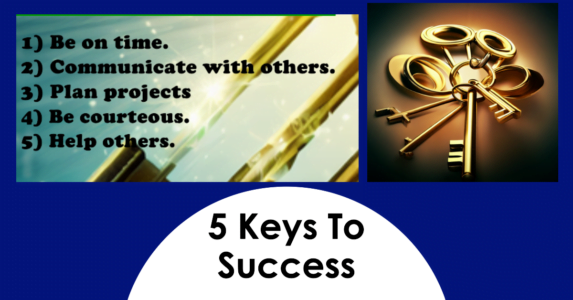INTERPERSONAL RELATIONSHIP
INTERPERSONAL RELATIONSHIP. A strong bond between two or more people refers to interpersonal relationships. The attraction between individuals brings them close to each other and eventually results in a strong interpersonal relationship.
“Success is a journey and it is not the destination. Disappointments, Rejections, Unsuccessful attempts, and Criticisms are not failures to the Successful people. Failures are part of success. Winners use failures as stepping stones to success. This is the only difference between people who win and people who don’t! ”
Forms of Interpersonal relationship
- An interpersonal relationship can develop between any of the following:
- Individuals working together in the same organization.
- People working in the same team.
- Relationship between a man and a woman (Love, Marriage).
- Relationship with immediate family members and relatives.
- Relationship of a child with his parents.
- Relationship between friends.
- Relationships can also develop in a group (relationship of students with their teacher, relationship of a religious guru with his disciples and so on).
Types of Interpersonal relationship:
Friendship-
- Theories of friendship emphasize the concept of friendship as a freely chosen association.
Family-
- Family communication patterns establish roles, identities and enable the growth of individuals. Family dysfunction may also be exhibited by communication patterns.
Romantic-
- Romantic relationships are defined in terms of the concepts of passion, intimacy and commitment.
Professional Relationships-
- Professional communication encompasses small group communication and interviewing.
Seven Essential Skills to build Strong Inter Relationships:
1. Relaxing Optimistically:
- If we are comfortable around others, they will feel comfortable around us.
- If we appear nervous, others will sense it and withdraw.
- If we are meeting someone for the first time, brighten up as if we’ve rediscovered a long-lost friend.
- A smile will always be the most powerful builder of rapport.
2. Listening Deeply:
- Powerful listening goes beyond hearing words and messages; it connects us emotionally with our communication partner.
- Listen to what the person is not saying as well as to what he or she is saying.
- Focus intently and listen to the messages conveyed behind and between words.
- Listening with our eyes and heart is important.
- Noticing facial expressions and body postures are also enhanced listening.
3. Feeling Empathetically:
- Empathy is the foundation of good two-way communication.
- Being empathetic is seeing from another person’s perspective regardless of your opinion or belief.
- Treat their mistakes as you would want them to treat your mistakes.
- Let the individual know that you are concerned with the mistake and that you still respect them as a person.
- Share their excitement in times of victory, and offer encouragement in times of difficulty.
- Genuine feelings of empathy will strengthen the bond of trust.
4. Responding Carefully:
- Choose emotions and words wisely.
- Measure your emotions according to the person’s moods and needs.
- Words can build or destroy trust.
- They differ in shades of meaning, intensity, and impact.
- What did you learn when listening deeply to the other individual?
- Reflect your interpretation of the person’s message back to them.
- Validate your understanding of their message.
5. Synchronizing Cooperatively:
- When people synchronize their watches, they ensure that their individual actions will occur on time to produce an intended outcome.
- Relationships require ongoing cooperative action to survive and thrive.
6. Act Authentically:
- Acting authentically means acting with integrity.
- It means living in harmony with your values.
- Be yourself when you are with someone else.
- Drop acts that create false appearances and false security.
- When you act authentically, you are honest with yourself and others.
- You say what you will do, and do what you say.
- Ask for what you want in all areas of your relationships.
- Be clear about what you will tolerate.
- Find out what your relationship partners want also.
- Being authentic creates mutual trust and respect.
7. Acknowledge Generously:
- Look for and accentuate the positive qualities in others.
- Humbly acknowledge the difference that people make in your life.
- Validate them by expressing your appreciation for their life and their contributions.
- If you let someone know that they are valuable and special, they will not forget you.
- Showing gratitude and encouragement by words and actions will strengthen the bonds of any relationship.
DIFFERENCES BETWEEN AGGRESSIVE, SUBMISSIVE AND ASSERTIVE BEHAVIOURS:
1. Submissive behaviour:
- Submissiveness is giving more importance to one’s relationship with others at the cost of one’s goals.
- Difficulty saying NO, letting the other make a decision not being able to make a request are typical observations with Submissive behaviour.
People who are submissive tend to:
- a) Avoid stating their needs and feelings;
- b) Communicate their needs and feelings in an apologetic way; and
- c) Give others rights that they don’t claim for themselves.
Example:
- “I’m really sorry. I just don’t have the time to go through those reports with you now.
- I’ve got to get all these accounts finished before lunchtime.
- My boss is a real pain, asking me to do this today.
- I’d really like to help you.
- I’ll look at it later if that’s okay?”
2. Aggressive behaviour:
- Aggressiveness is giving more importance to your goals than to your relationships.
- At times lack of respect for others, their thoughts, feelings, opinions, values etc.
- It can also be seen in nonverbal behaviours.
- Aggressiveness is expressed either directly or passively.
- Passive aggression includes gossiping, taunting, cracking a mean joke etc.
People who are aggressive tend to:
- a) Encourage others to do things by flattery or manipulation;
- b) Ignore the needs and feelings of others, either intentionally or by default; and
- c) Take rights for themselves that they don’t give to others.
Example:
- “Do you think I’ve nothing better to do than check those reports?”
3. Assertive behaviour:
- Assertiveness is considered to be the ideal style of communicating.
- It is about giving equal importance to and being able to finely balance the goals and the relationships.
- It involves being able to say NO effectively, being able to express thoughts, feeling, opinions freely.
- This is logical, thinking behaviour.
- It is not driven by your emotions.
- And although it may be natural for a few people, it tends to be learned behaviour.
People who are assertive tend to:
- a) Being clear and direct in what you say;
- b) Stating your needs and feelings in a straightforward way; and
- c) Standing up for your rights without violating the rights of others.
Example:
- “I’m unable to help you with those reports this morning.
- I am doing accounts at the moment, and I’ll be pleased to help you this afternoon.
- What time suits you?”
- Which behaviour is best?
- None of this is necessarily good or bad, but if we want to be better at managing difficult people, we need to ensure that:
- We should not use submissive or aggressive behaviour.
- We should recognise submissive or aggressive behaviour in others.
- We should learn and use assertive techniques with difficult people.
- Assertiveness is a very positive response in any interaction.
- It makes it clear to the other person what you are unhappy about and allows you to calmly state your case without violating their rights.
LATERAL THINKING:
- Lateral thinking is the ability to think creatively or “outside the box” as it is sometimes referred to in business, to use your inspiration and imagination to solve problems by looking at them from unexpected perspectives.
- It’s very important in careers such as advertising, marketing, the media and art and design.
- The Lateral thinking capabilities of a person can be tested by asking him/ her a set of questions.
Some Questions and Answers for Lateral thinking:
1. A man built a rectangular house, each side having a southern view. He spotted a bear. What colour was the bear?
- Answer: White. Only at the North Pole can all four walls be facing south.
2. Is it legal for a man to marry his widow’s sister?
- Answer: No – because he’s dead.
3. You are running in a race. You overtake the second person. What position are you in?
- Answer: If you overtake the second person then you become second.
4. In the same race, if you overtake the last person, then you are in what position?
- Answer: You can’t overtake the last person in a race!
SELF ESTEEM: HIGH OR POSITIVE SELF ESTEEM V/S LOW SELF ESTEEM



